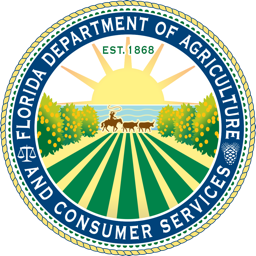Rural and Family Lands Protection Program
The Rural and Family Lands Protection Program (RFLPP) is an agricultural land preservation program designed to protect important agricultural lands through the acquisition of permanent agricultural land conservation easements. The program is written into Section 570.70, Florida Statutes, and Chapter 5I-7, Florida Administrative Code (F.A.C.) Projects are reviewed and ranked through a formal process by the Rural and Family Lands Protection Program Selection Committee and approved by the Governor and Cabinet.
The program is designed to meet three needs:
- Protect valuable agricultural lands.
- Create easement documents that work together with agricultural production to ensure sustainable agricultural practices and reasonable protection of the environment without interfering with agricultural operations in such a way that could put the continued economic viability of these operations at risk.
- Protect natural resources, not as the primary purpose, but in conjunction with the economically viable agricultural operations.
Rural and Family Lands Protection Program Application
Please see the link below to preview the application.Sample Application
A digital copy of each of the following supporting documents must be submitted with the application. Permitted file types include .jpg, .jpeg, .png, .ps, .tif, .tiff, .bmp, .doc, .docx, .txt, .pdf, .pptx, .csv, .xls, .xlsx, .dbf, .shp, .shx, .prj, .cpg, .sbn and .sbx.
- Vesting deed, or deeds if the property was acquired in multiple transactions
- Abstract of title or title insurance policy, if available
- Boundary survey and environmental site assessment, if available
- Management or stewardship plan, if available
- Copies of county tax maps, plat maps, or Florida Department of Transportation county general highway maps, with the boundaries of the project and any outparcels clearly delineated
- A legible or electronic copy of the property appraiser’s tax identification card(s) with the tax assessed value and acreage of each parcel, description and approximate value of improvements, ad valorem taxes assessed, and the names and addresses of each owner identified
- If you have an owner’s authorized representative, you must complete and submit the Owner’s Authorized Representative Form.


